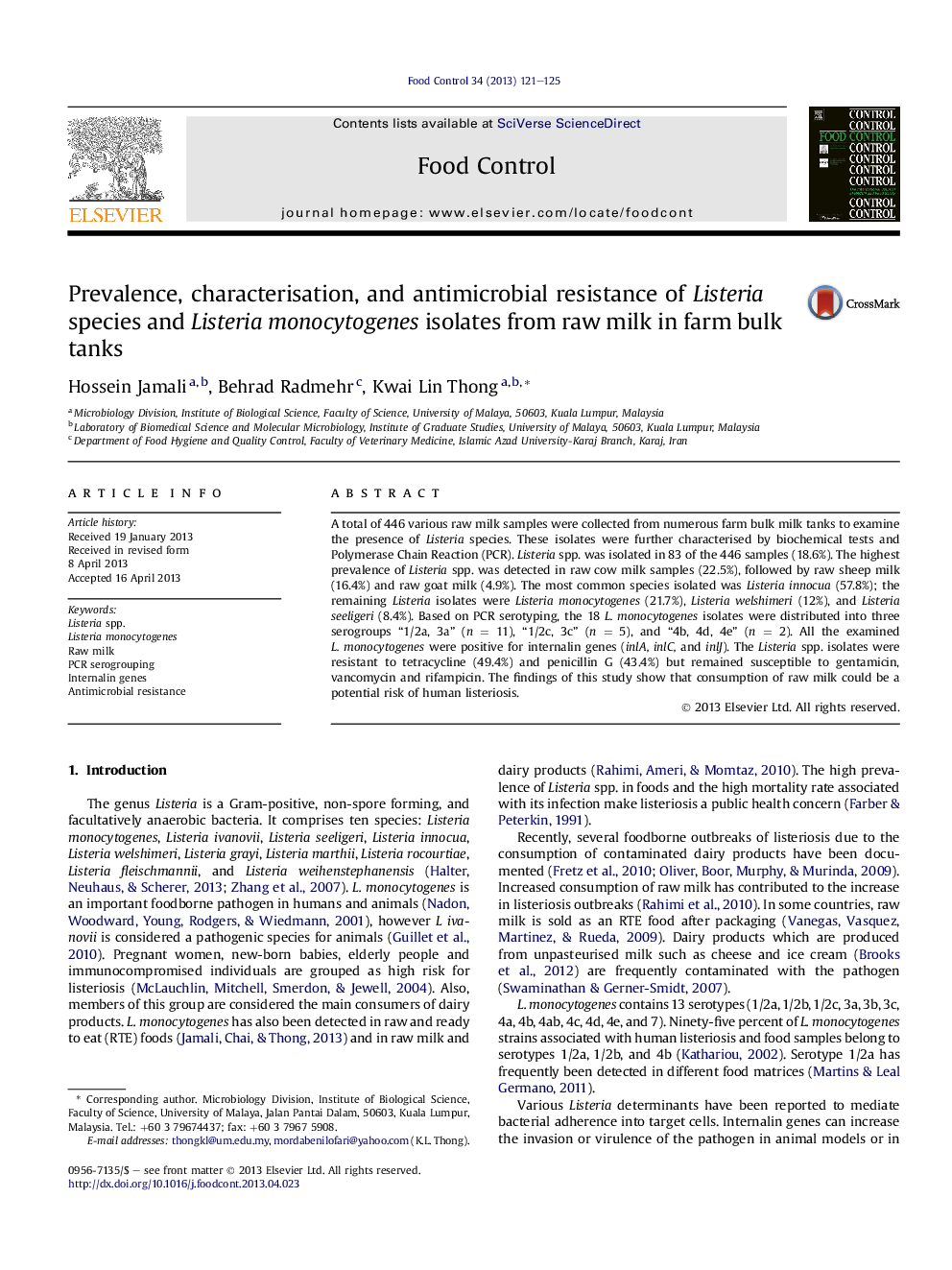| Article ID | Journal | Published Year | Pages | File Type |
|---|---|---|---|---|
| 6392714 | Food Control | 2013 | 5 Pages |
â¢Out of 446 raw milk samples tested, 18.6% were contaminated with Listeria spp.â¢21.7% of the contaminated samples were Listeria monocytogenes positive.â¢61.1% of L. monocytogenes isolates belonged to serogroup 1/2a, 3a.â¢All the examined L. monocytogenes were positive for inlA, inlC, and inlJ.â¢The Listeria spp. showed high resistance against tetracycline and penicillin G.
A total of 446 various raw milk samples were collected from numerous farm bulk milk tanks to examine the presence of Listeria species. These isolates were further characterised by biochemical tests and Polymerase Chain Reaction (PCR). Listeria spp. was isolated in 83 of the 446 samples (18.6%). The highest prevalence of Listeria spp. was detected in raw cow milk samples (22.5%), followed by raw sheep milk (16.4%) and raw goat milk (4.9%). The most common species isolated was Listeria innocua (57.8%); the remaining Listeria isolates were Listeria monocytogenes (21.7%), Listeria welshimeri (12%), and Listeria seeligeri (8.4%). Based on PCR serotyping, the 18 L. monocytogenes isolates were distributed into three serogroups “1/2a, 3a” (n = 11), “1/2c, 3c” (n = 5), and “4b, 4d, 4e” (n = 2). All the examined L. monocytogenes were positive for internalin genes (inlA, inlC, and inlJ). The Listeria spp. isolates were resistant to tetracycline (49.4%) and penicillin G (43.4%) but remained susceptible to gentamicin, vancomycin and rifampicin. The findings of this study show that consumption of raw milk could be a potential risk of human listeriosis.
